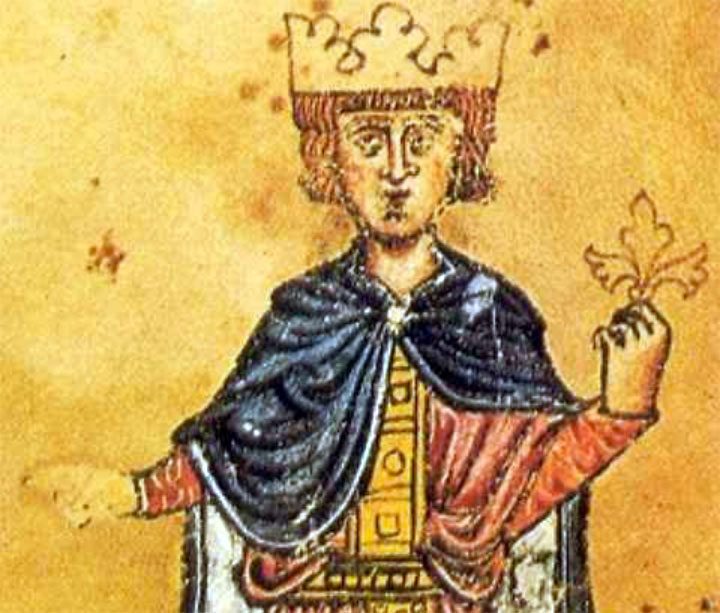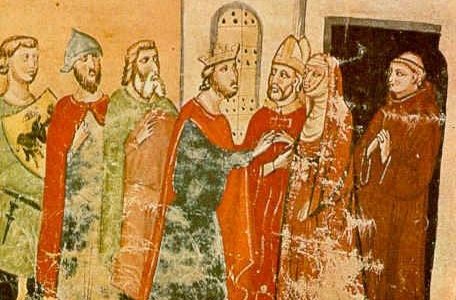{: it} Perhaps not everyone still knows that Frederick II of Swabia, Emperor and King of some of the greatest empires of the past, was actually born in the Marche region, precisely in Jesi, on 26 December 1194. A fortuitous connection that consecrated Jesi, delivering it to all encyclopedias and history books. Right here a museum bears his name, as a tribute to the life and work of the great emperor and patron who changed history.
Perhaps not everyone still knows that Frederick II of Swabia, Emperor and King of some of the greatest empires of the past, was actually born in the Marche region, precisely in Jesi, on 26 December 1194. A fortuitous connection that consecrated Jesi, delivering it to all encyclopedias and history books. Right here a museum bears his name, as a tribute to the life and work of the great emperor and patron who changed history.
Who was Frederick II and why was he born in Jesi
Federico was born in Jesi by chance, where his mother Costanza had stopped while her husband was struggling with the second (then victorious) expedition to conquer the Kingdom of Sicily. With his birth, two of the greatest European families of the time were brought together in one person: the Swabians and the Altavillas. Federico was therefore destined to become great, but he actually did much more, exceeding all expectations.
 Born from a fortunate and strategic union, Frederick was in fact the son of the Emperor of the Holy Roman Empire, as well as King of Germany and Sicily, Henry VI and of Constance of Hauteville. Heir to the kingdom of Sicily, Constance played a central role in the leadership of the Empire and in the development of her son's future. In 1197, when Henry died, Constance carried on her husband's work and, to do so, she left Frederick in the hands of the new Pope Innocent III, as guardian, thus guaranteeing him not only a brilliant career but salvation itself.
Born from a fortunate and strategic union, Frederick was in fact the son of the Emperor of the Holy Roman Empire, as well as King of Germany and Sicily, Henry VI and of Constance of Hauteville. Heir to the kingdom of Sicily, Constance played a central role in the leadership of the Empire and in the development of her son's future. In 1197, when Henry died, Constance carried on her husband's work and, to do so, she left Frederick in the hands of the new Pope Innocent III, as guardian, thus guaranteeing him not only a brilliant career but salvation itself.
Crowned King of Sicily at just 4 years old, and always under the protective wing of Pope Innocent III, Frederick received a multifaceted and complete education, which did not only focus on legal and administrative issues, but which also touched on the arts and writing .
Frederick was, in addition to a great King and Emperor of the Holy Roman Empire, the founder of the first public and secular university in the West, in Naples, and contributed substantially to Italian literature as we understand it today, through the establishment of a poetic school Sicilian, to which we owe the birth of the "sonnet". A writer in his turn, Federico hosted numerous artists in his court. An attentive and generous patron, he was also a hunter and a skilled strategist: all this earned him the famous nickname of Stupor Mundi (wonder of the world).
The Museum of Jesi
Jesi celebrates the genius and greatness of Emperor Frederick II with a one-of-a-kind museum, which recalls his life, history and projects: from his birth to the conquest of the kingdoms, passing through his frequent activity in the artistic and literary fields . Right in the historic Palazzo Ghislieri, the precise point of the city where Federico is said to have been born, you can admire installations, multimedia contents, manufacturing and much more distributed in 16 rooms. A character from the Marche by destiny who left indelible traces of his passage from Jesi to the whole world.
Opening hours, cost of tickets and other information regarding the museum on: https://www.federicosecondostupormundi.it/{:}{:en}
Probably not everyone knows that Frederick II of Swabia – emperor and king of some of the biggest empires of the past – was actually born on 26 December 1194 in the Marche region, precisely in Jesi. A coincidence indeed, that he appointed the city of Jesi to every encyclopedia and history book. A museum in Jesi is named after him, his birth city paid homage to the life and actions of the great emperor and patron who changed history.
Who was Frederick II and why he was born in Jesi
Frederick was born accidentally in Jesi, where his mother Constance settled down while her husband was fighting during the second (and victorious) invasion to conquer the Kingdom of Sicily. After his birth, two of the most important Houses at the time reunited under one single person: Swabia and Altavilla. Frederick's destiny was to become important, but he actually made much more than expected.
He was born from a happy and strategic marriage: Frederick was the son of Henry VI – Emperor of the Holy Roman Empire, King of Germany and Sicily – and Constance of Altavilla. Heiress of the Kingdom of Sicily, Constance had a key role in guiding the Empire and her son's future. In 1197, when Henry died, Constance took the powers following her husband's policies, and to do so, she placed Frederick under the protection of the new Pope Innocent III, who became her son's tutor granting him a brilliant career and safety as well.
He was crowned King of Sicily aged 4, and under the protection of Pope Innocent III, Frederick was raised and educated to law, administration, but also arts and writing.
Frederick was a great king and emperor of the Holy Roman Empire, and the founder of the first public and lay university in the western world, in Naples, and contributed substantially to Italian literature – as we mean it today – by the constitution of the Sicilian school of Poetry, whose scholars invented the “sonnet”. He was a writer himself, Frederick gathered many artists around his court. He was an attentive and generous patron; he was also a hunter and a clever strategist: because of all this, he was aptly named Stupor Mundi (splendor of the world).
Museum in Jesi
Jesi celebrates the genius and greatness of the emperor Frederick II with a one-of-a-kind museum that evokes his life, history and projects: from his birth to the conquest of kingdoms, through his frequent activities in the literary and artistic fields. In Palazzo Ghislieri – the specific place where Frederick was born – you can see installations, multimedia contents, manufactures and much more over 16 rooms. A celebrity of the Marche region for destiny, who left insoluble traces of his presence from Jesi to the whole world.
Opening hours, ticket prices and other information about the museum please visit: https://www.federicosecondostupormundi.it/{:}
